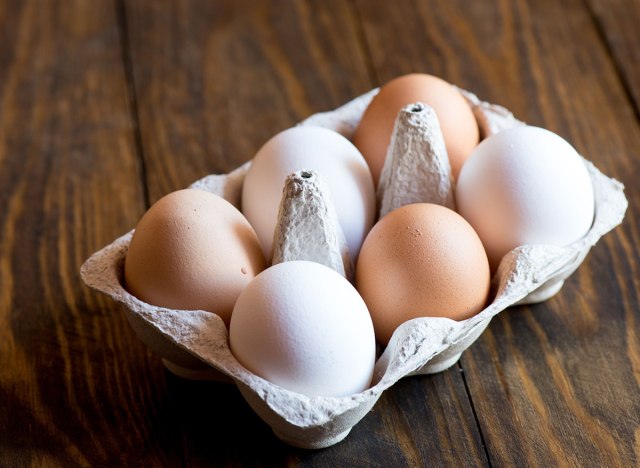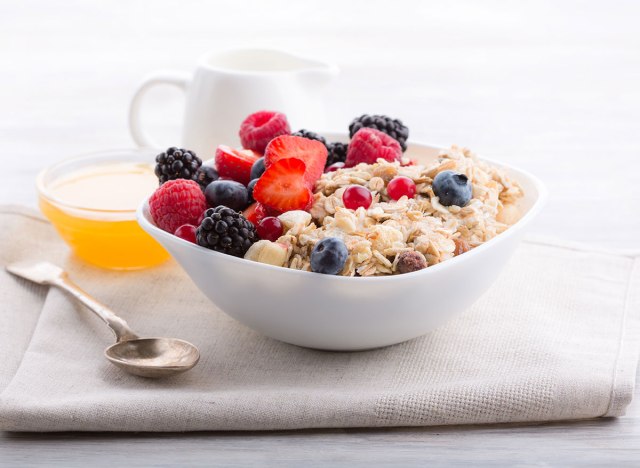4 Biggest Food Studies About Diabetes You Should Know
Diabetes affects more than 10% of the entire U.S. population, and 90-95% of these individuals have type 2 diabetes which, unlike type 1 diabetes, is largely preventable.
Someone develops type 2 diabetes when the cells in their body become insulin resistant. Insulin is a hormone that’s produced by the pancreas and allows cells to use blood sugar for energy. But when cells no longer respond properly to the hormone, your pancreas goes into overdrive to make more until, eventually, it can no longer keep up. As a result, your cells aren’t able to utilize the sugar as efficiently, so it remains in your blood, causing blood sugar levels to elevate.
Aside from improving lifestyle habits, such as getting exercise regularly and keeping your intake of saturated fats and added sugars low, several studies that were published in the last six months have pinpointed a few other key findings that may help you stave off type 2 diabetes. Below, you will see just four examples of what researchers have uncovered, and then, don’t miss The 7 Healthiest Foods to Eat Right Now.
Eating too many eggs may increase your diabetes risk.
There are a host of health benefits associated with eating eggs, which are rich in Vitamin B and minerals like selenium, and provide a good source of healthy fats and protein. However, one study published in the British Journal of Nutrition in late 2020 suggests that egg consumption may be associated with type 2 diabetes. Of the 8,500 participants whose dietary reports were examined from 1991 to 2009, those who ate one or more eggs each day increased their diabetes risk by 60%.
The researchers suggested that the dietary cholesterol from eggs could play a role in raising blood sugar levels, which can then lead to insulin resistance over time. Perhaps the best route here is to limit your egg consumption to just a few days a week, that way you still reap its health benefits without running the risk of elevating your cholesterol levels.
Saccharin may not cause type 2 diabetes.

There’s quite a bit of skepticism around whether alternative sweeteners are good for you to consume, with some research suggesting they c0uld interfere with metabolic function and increase the risk of type 2 diabetes (T2DM). However, a 2021 study from The Ohio State University Wexner Medical Center and The Ohio State University College of Medicine found that one particular sugar alternative found in many low-carb, keto-friendly food products and Sweet n’ Low may not have any effect on T2DM at all.
The study, which was published in the journal Microbiome, examined the gut microbiota of 46 healthy adults between the ages of 18 and 45, a majority of whom consumed supplements of saccharin every day for two weeks. After examining participants’ gut bacteria, George Kyriazis, PhD, assistant professor of biological chemistry and pharmacology at Ohio State and senior author of the study, explained that there was no indication of glucose intolerance, which is what causes high blood sugar levels.
“We found no effects of saccharin supplementation on glucose regulation and no changes in gut microbiota of participants,” he previously told Eat This, Not That!. “It is important to note here that the saccharin intake we used in our study is practically more than double the average intake of the most avid consumers of saccharin in the U.S.”
Magnesium deficiency may increase sugar cravings.

Chronically low levels of magnesium could increase your risk of developing T2DM, according to the Mayo Clinic. In fact, craving chocolate could be a sign that you’re magnesium levels are low, Susan Yanovski, MD, co-director in the Office of Obesity Research at the National Institute of Diabetes and Digestive and Kidney Diseases, said in an article about magnesium deficiency.
“Because chocolate is high in magnesium, it’s been suggested that a deficiency may play a role in these cravings,” she said. “This is a research area that needs more investigation, but it does present an intriguing possibility in terms of what might be the underlying cause of these cravings.”
Aside from a square or two of dark chocolate each day, make sure that you’re eating plenty of magnesium-rich foods, such as seeds, nuts, dried fruits, dark leafy greens, brown rice, and beans.
Eating breakfast may decrease diabetes risk.

Maybe breakfast being labeled as “the most important meal of the day” isn’t such a stretch after all. A recent study shared virtually at ENDO 2021, the Endocrine Society’s yearly meeting, revealed that eating a meal before 8:30 a.m. could reduce your risk of T2DM. As Marriam Ali, MD, the lead researcher of the study, previously told Eat This, Not That!, it all has to do with our circadian clock governing the rhythms of metabolic hormones throughout the day.
“This includes insulin, a key hormone in diabetes, for which sensitivity tends to be higher in the morning,” she said.
Essentially, the cells in your body are able to use blood glucose more efficiently in the morning, and as a result, blood sugar levels are more likely to remain stable.
Now, be sure to check out Eating These Two Things May Be Ruining Your Workout Progress, Study Says.
The post 4 Biggest Food Studies About Diabetes You Should Know appeared first on .




